NHRA Top Fuel Canopy Turns 10 Years Old
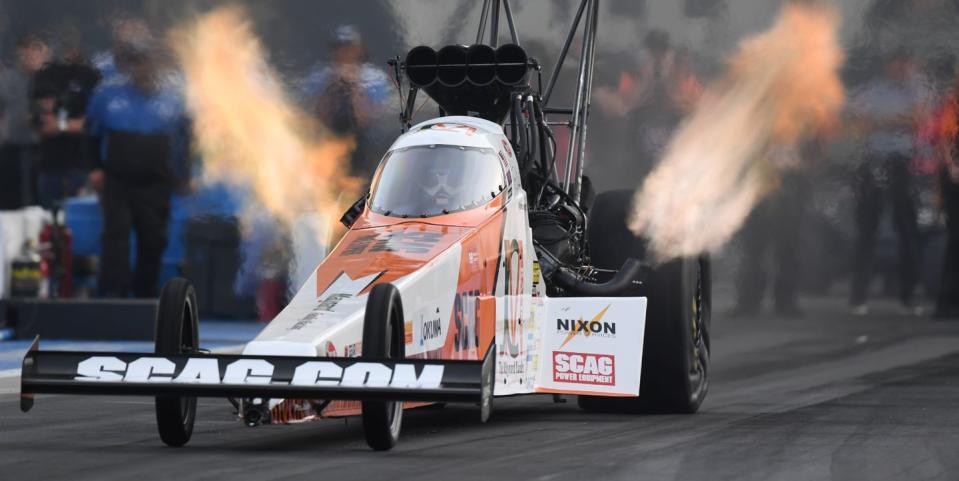
Then-Don Schumacher Racing crew chief Mike Green pursued the canopy project after NHRA Top Alcohol Dragster driver Mark Niver was killed in 2010 at Seattle.
Leah Pruett’s vicious airborne accident at St. Louis in October 2020 challenged the canopy, and she escaped unhurt.
Antron Brown said he avoided injury—thanks to the canopy—in severe wrecks in two successive seasons.
When the NHRA opens the Lucas Oil Nationals Aug. 18 at Brainerd, Minnesota, it will mark the 10th anniversary of the Top Fuel cockpit canopy.
And a decade after it debuted, the bolt-on ballistic polycarbonate component still is optional—and still is questionable for a number of racers. But it’s equally indispensible for others.
The first to test the claims of the innovative Don Schumacher Racing safety project was Antron Brown, not once but twice in successive seasons. At the 2013 Winternationals, his dragster snapped and the engine blew at the end of his 308-mph second-round run that disintegrated into a fiery, wall-damaging crash that ended with him and the car upside down in the sand trap beyond the pavement.
Brown praised the canopy’s value: “The windshield is five-eighths-of-an-inch thick. Nothing got to me. When I hit the sand trap, I saw stones flying all over the place, but I didn't get dusty. Nothing got into me. It really, really did its job. Thank God that canopy is on our car, because when we hit that sand trap it really kept everything away from me and the fire away from me. I don't know what would've happened if we would've had [the traditional, open-cockpit] set-up on the front of the car."
The following May, at Atlanta, he testified that the canopy protected him as advertised following a similar-looking wreck during Friday night qualifying.
Leah Pruett’s vicious airborne accident at St. Louis in October 2020 yet again challenged the canopy, and she escaped unhurt. Still shaken, she expressed her thanks for the canopy. “Obviously, they work very well, and they have success with them,” Scrappers Racing crew chief Rob Flynn said.
But his team-owner/driver, Mike Salinas, doesn’t race with a canopy affixed to his dragster. And Flynn said, “All the teams I’ve worked with, it’s just not something they ran. It’s never been a [topic of] discussion. I think it’s a personal preference. It seems good either way. If you talk to Antron, he’ll tell you stories where parts would have hit him if he didn’t have the canopy. So that’s a wonderful thing. But other people, if it’s not what they choose to do, then that’s fine also.”
Tony Schumacher, the driver on whom the original canopy project centered, was thankful his father, Don Schumacher, gave the green light to then-Don Schumacher Racing crew chief Mike Green, his assistant Neal Strausbaugh, and Joe Veyette in 2010, in cooperation with Aerodine Composites’ Craig McCarthy. The NHRA gave its blessing for the canopy during the 2012 season.
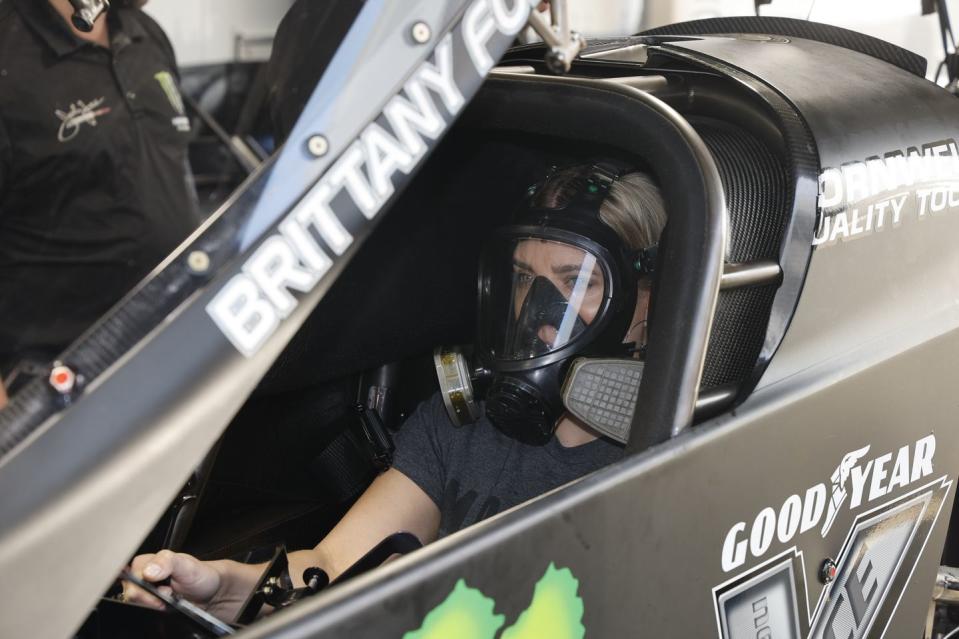
Tony Schumacher said the canopy “is bulletproof. Parts are bouncing down the track. When Kenny Bernstein crashed [Round 2, October 1999, Memphis] and Scelzi crashed [Qualifying Session 1, June 2000, Joliet, Illinois] and their stuff was going in every direction over my car, I’d have killed to have [the canopy] on. Now I have an almost false sense of security, because it’s still a fast car. But it’s nice to keep that stuff out of your cockpit.
“When Scelzi crashed against me, his nose came around and my blower belt came off or he’s in my cockpit. When Bernstein crashed, his mags were bouncing over my tire. And I’ve hit two birds. [The canopy] is to divert that. It’s not for speed. It’s not for decoration. It’s for safety,” Schumacher said.
Green was inspired by an innovative boat-racing design, and he pursued the project after NHRA Top Alcohol Dragster driver Mark Niver was killed in 2010 at Seattle. He said he thought, “If there’s anything we can do to make [the sport] safer, we need to probably do it. So that started the whole process.
“We made the initial one and took it to West Palm Beach, and it weighed, like, 100 pounds,” Green said. “But we put it on the car and Tony got in it and drove it and he said, ‘I like it.’ That was the first thing—if he didn’t like it, we were never going to do it. But he said, ‘I like it,’ so then we went to building a more competitive one, and it has just evolved, evolved, evolved.
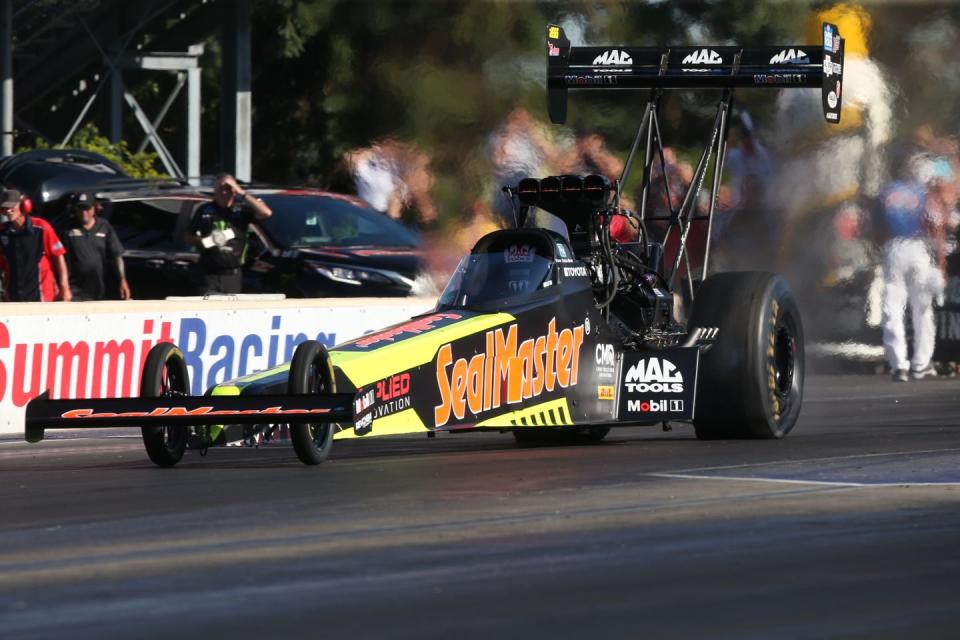
“It took a couple of years to get a competitive one [as lightweight as possible]. Then it took another year for the NHRA to let us run it. It was a year of aero testing and a lot of stuff to convince—I don’t necessarily think it was the NHRA but the rest of the competitors—that it wasn’t an advantage,” he said.
That’s an argument that persists. Green said he believes the canopy gives the driver “a slight performance disadvantage because of the weight,” which he estimates has come down to “20 or 30 pounds.”
Steve Torrence never has competed with a canopy on his Top Fuel dragster, and Richard Hogan, his crew chief, said, “We just never pursued it, because we’d have to change everything. We have five cars we’d have to retrofit... and the extra weight... It’d be a lot of work. And it’d probably cost $20,000 a car.”
But Hogan isn’t persuaded that the canopy isn’t an aerodynamic asset. He said of the latest version of the canopy that’s noticeably wider and flatter, “There’s not supposed to be, but there’s probably an aero advantage, because they let them change the design and they haven’t really policed it. At some point, you might have to run a canopy just because it hasn’t been policed properly. With the original version, I don’t think there was an advantage but there is with the newer version.”
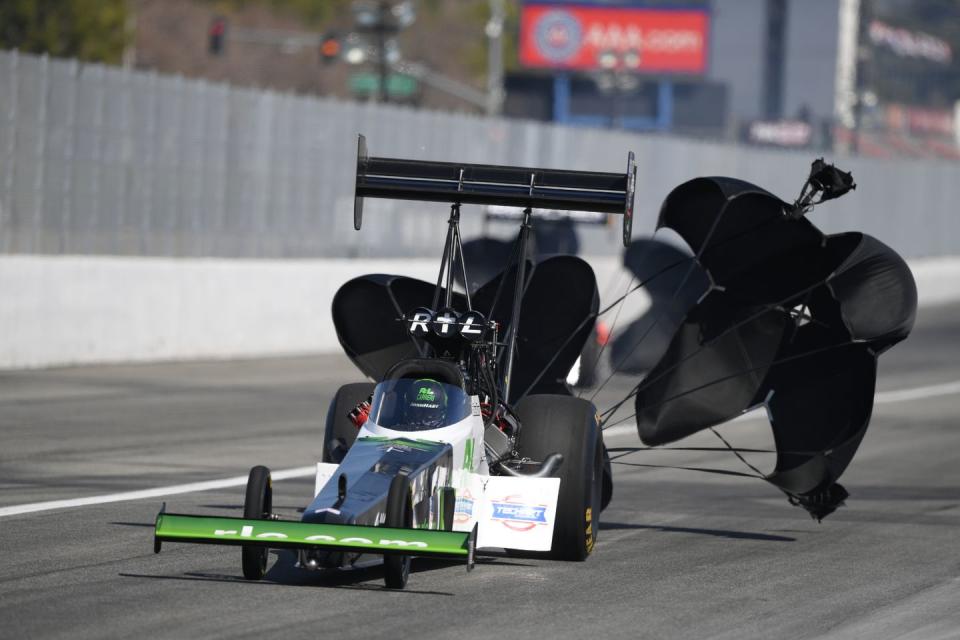
And that’s not the only objection. It wasn’t attractive to some. Its ability to keep fire away from the driver was unknown. Means of escape or extraction in case the driver is incapacitated has been another sticking point for some.
Josh Hart, who prefers the open cockpit, added another reason in the thumbs-down column: “Based on what little experience I have with it, they say you can [find added performance] a little bit more through the middle [of the run without the canopy] because the car’s not as rigid. Brittany Force kind of makes that an anomaly, because she uses a canopy and she throws down at every racetrack. Maybe that was a rumor at the beginning of the canopy’s life.”
Ever since the canopy’s infancy, Schumacher has tried to combat every argument against it: “I don’t care if it looks ugly. The fact is I feel safer. It’s the smartest thing you can put on a car until we figure out something smarter.
“People say, ‘What if you’re on fire?’ IF my car is on fire and IF I’m knocked out and IF Safety Safari takes the weekend off and IF my fire bottles don’t work, I might get hot. This car goes 330 mph. I put on a firesuit. I get in a roll cage, and I wear a seat belt, because it’s a very fast race car and there’s a risk. I understand that. I’ve broken cars in half, and I don’t want to be on fire, but I trust in my safety equipment. It’s so much better than it used to be.”
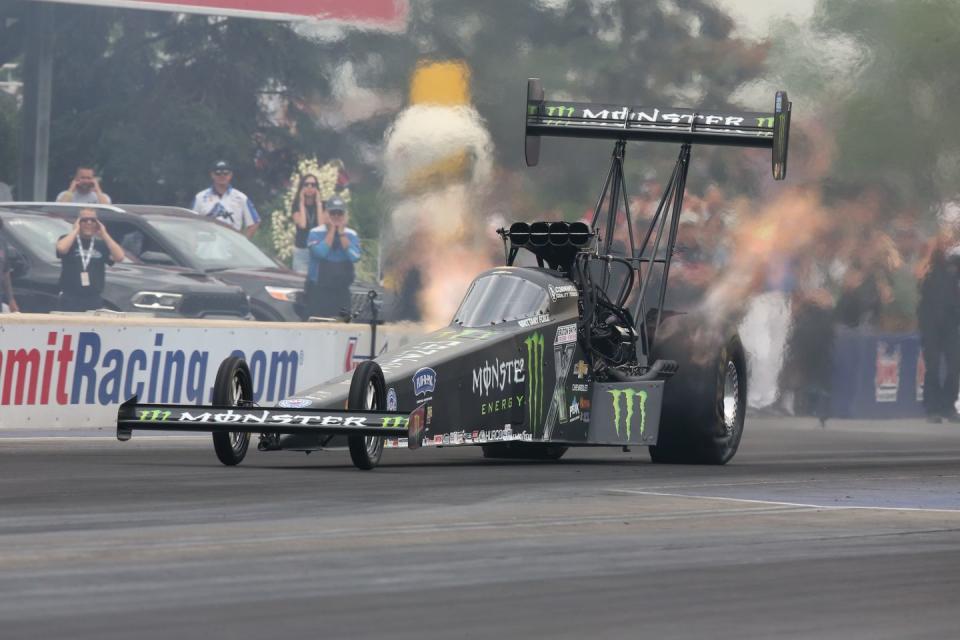
Hart said he still thinks about Brown’s crash, “where he was upside down or up against the wall. That’d be relatively scary. Then you’re kind of stuck until everybody gets to you, whereas we’ve got a little bit better chance of getting out without an open cockpit. But let’s be honest: If something happened at 330 miles an hour, all bets are off, anyway.”
Just the same, Hart said, “I’ve heard they’re a lot quieter and [the ones who swear by the canopy] say they feel a lot safer. In Leah’s case, I’d say everything in that incident helped. I’d love to try one. I’m open. That’d be awesome.”
Green—now Justin Ashley’s crew chief—said in looking back, “We didn’t have a big budget, but we did fire tests. Especially when we were developing this, there were way more people getting burned from fire coming in the cockpit from the engine. We have to run a fire system. I wish every dragster had a fire system, because the fuel line goes right between your legs and the engine’s full of oil and the driver can get on fire. I really think it makes sense for all dragsters to have one.” It’s not mandatory for open-cockpit cars.
And the canopy isn’t mandatory. Green said, “A canopy dragster is safer than a non-canopy dragster.” But he shrugged and said, “When they first saw it, some people said, ‘I don’t want to drive that,’ and that’s the way they’ve been. It’s a personal choice. If they feel more comfortable driving without it, then that’s what they’re going to do. It’s nothing we planned on having every car do. We just wanted to have a safer car for Tony Schumacher. That’s what we set out to do.
“I think it was a good thing, definitely a worthwhile project,” he said.
Where do you stand on the issue of Top Fuel dragster canopies? Please comment below.

 Yahoo Autos
Yahoo Autos 